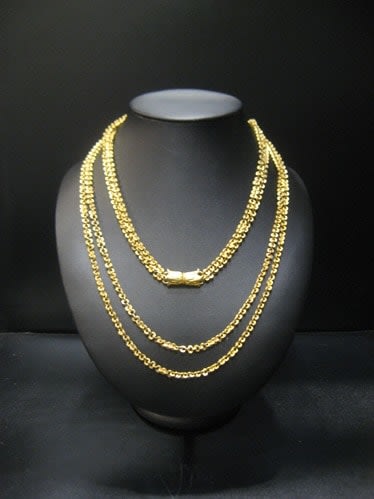Medieval Islamic Double Chain Gold Necklace, 11th Century CE - 12th Century CE
Gold
36.4
OS.283
A necklace comprising of two strands with a foliate centrepiece in the form of a double lotus motif with incised detailing. This gold necklace was made using a type of...
A necklace comprising of two strands with a foliate centrepiece in the form of a double lotus motif with incised detailing.
This gold necklace was made using a type of figure-8 linkage that first appears in Byzantine jewellery in the 6th or 7th Century AD. The centrepiece was never intended to open and thus did not function as a conventional clasp. It is possible that originally the two chain lengths crossed and that the ornament was worn over the chest, crossing over on the back. This type of breast ornament was known in Classical antiquity and in early Byzantine times, and is seemingly depicted on Gandharan and later Central Asian sculpture.
This gold necklace was made using a type of figure-8 linkage that first appears in Byzantine jewellery in the 6th or 7th Century AD. The centrepiece was never intended to open and thus did not function as a conventional clasp. It is possible that originally the two chain lengths crossed and that the ornament was worn over the chest, crossing over on the back. This type of breast ornament was known in Classical antiquity and in early Byzantine times, and is seemingly depicted on Gandharan and later Central Asian sculpture.
